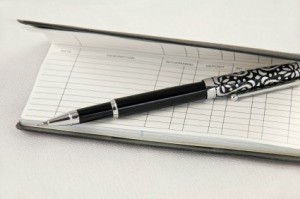 Here's a simple way to, sort of, "hide" money from yourself in your checkbook. It's like a secret savings that you know is there, but you don't spend it. So, you simply take the amount you're going to subtract out and round up to the next closest dollar or add on a few extra dollars.
Here's a simple way to, sort of, "hide" money from yourself in your checkbook. It's like a secret savings that you know is there, but you don't spend it. So, you simply take the amount you're going to subtract out and round up to the next closest dollar or add on a few extra dollars.
For example: your checking account entry might look like this:
But you actually enter $17.00 or $20.00, which would make your hidden savings .48 cents or $3.48.
You get the idea, just "hide" a bit with each and every checking/debit account transaction. You can also enter the correct amount in the description area and have a running balance *the real one* so you know it, like you normally would. Just an idea you can use to save a little money, it adds up! I can do a diagram if need be.
Source: My sister told me about it and I adapted it for myself.
By Elizabeth Farnsworth from Los Banos, CA
This page contains the following solutions.
I have found whether I have time at the check out counter, or if I record a purchase later in the car or at home, my check book transaction register is still a great tool for bookkeeping.
If you have a problem balancing your checkbook and cannot find the error. Divide the amount your figures are off by 9. If the answer comes out even, then the error is probably a transposition. For instance, if 91 should be 19, the difference is 72.
End your check register with the end of the year and start a new one for the new year. That way you can pack the check registers away with each year's tax paperwork. By Beverly in TN
ThriftyFun is one of the longest running frugal living communities on the Internet. These are archives of older discussions.
With a growing family I find it almost impossible to save cold hard cash so I use this little trick to stash a few pennies here and there and they all add up.
When I write a check, I make sure I write the real amount on the check, but in my checkbook register I round the figure up.